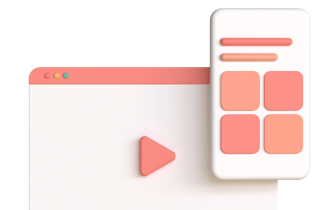

Prototyping in Figma allows for no interactivity with the elements. Let’s delve into 10 benefits that ProtoPie has over Figma. ProtoPie offers a range of essential features making it your go-to prototyping tool. Needless to say, these need to have the right benefits and features. Instead, designers must selectively pick the tools that they’re going to work with. Which benefits does ProtoPie provide for prototyping over Figma?

Interactions involving text input, voice, media playback, sensors, etc.Interactions with specific touchscreen triggers.Conditional and cause-and-effect interactions.Scenarios with multiple states and dependencies.If your projects sound more like the list described below, you'd be better off using ProtoPie:

When should you use ProtoPie for prototyping? Some of these leading companies are Microsoft, BMW, Headspace, Snap, and Electronic Arts. Create high-fidelity prototypes for anything digital, anything with a screen:ĭesign teams and their companies across different industries use ProtoPie daily-next to their UI design tool Figma-for all kinds of prototyping. ProtoPie is the easiest prototyping tool to turn your interaction design ideas into realistic prototypes. This makes your prototype easier to manage because it eliminates the need for chaotic interweaving lines all over the place. You simply select a type of trigger you want, and dynamically set the response of what should happen. However, you open up pandora’s box when it comes to multiple flows and sequences. This works fine if you only have four screens. Building a prototype in Figma requires you to link every screen. To explain further, we first need to delve into the differences between linear prototyping, and dynamic prototyping. By using ProtoPie instead of or alongside Figma, you will be able to create dynamic and realistic prototypes. Early-stage prototyping without having to remake interactions.Click-through prototypes with frames that have a few states.When should you use Figma for prototyping?įigma is a great tool if your project meets the following specific use cases: However, when a prototype grows in complexity, it becomes difficult to make sense of, manage, or maintain.Įach screen with multiple states would increase the number of wires significantly. In theory, the wiring model of linking frames with each other makes sense. It is great for simple clickable prototypes with a few states-focusing on a flow, not the actual interactions.īut Figma fails to provide the sort of realistic, high-fidelity prototyping required for such a fast-paced marketplace.Įven with a few states, it can quickly lead to ‘noodle chaos’ whenever you add more. Need to showcase a sequence of basic transitions between static screens? You can easily do that in Figma by linking frames together and adding some simple interactions. While it’s not exactly a prototyping tool per se, it does have some prototyping capabilities. For the greatest prototyping impact, use Figma and ProtoPie together as they serve different purposes.įigma is one of the world’s most well-loved UI design tools. ProtoPie offers essential high-fidelity prototyping features Figma simply doesn’t have.These are either very hard to do with Figma or impossible with Figma alone. ProtoPie allows you to create realistic, dynamic prototypes for multi-state scenarios.Let’s take on two very different, well-respected tools: Figma and ProtoPie. The question is: what is the best prototyping tool on the market to meet those demands head-on? And designers are under increasing pressure from stakeholders to send workable prototypes to the engineers so they can outpace their competitors. In 2022, the UX service market was valued at 19.2 billion dollars, according to Digital Journal.Īs the project stakes are higher, so are the risks involved. To meet these demands, UX prototyping tools are becoming more powerful. Product UI/UX design is evolving to meet changing consumer demands.


 0 kommentar(er)
0 kommentar(er)
